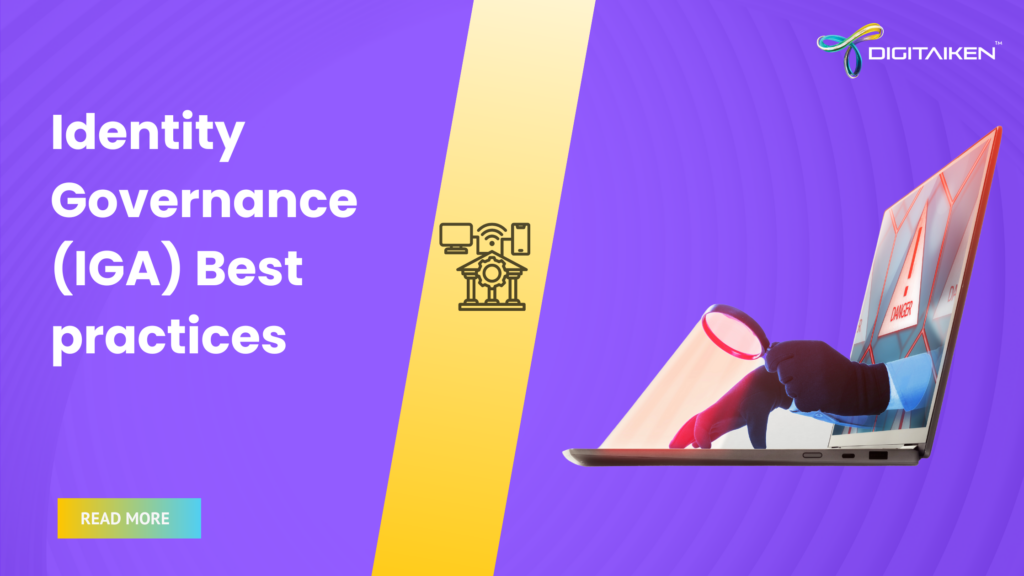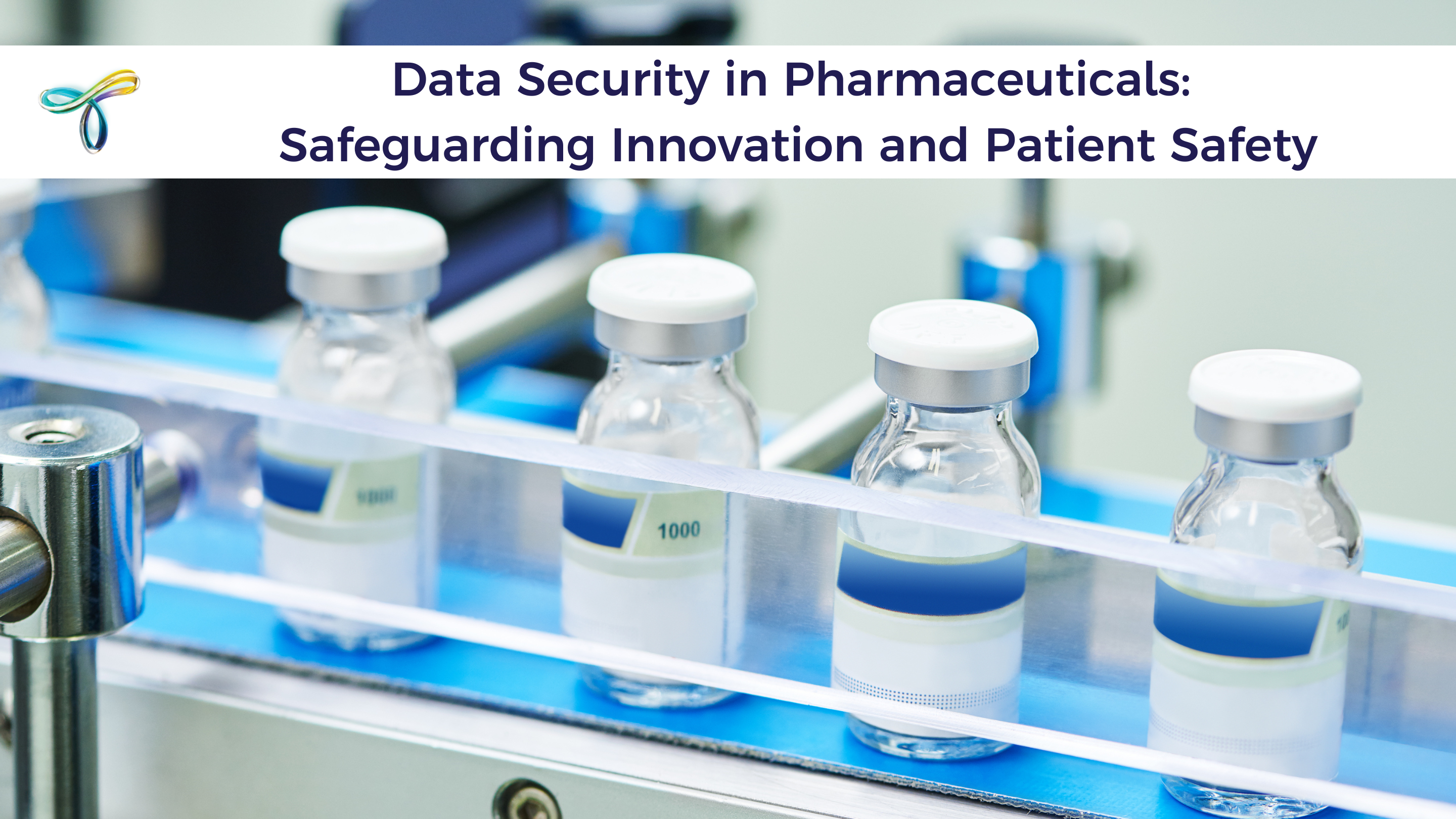In today’s interconnected digital landscape, where data breaches and cyber threats are on the rise, organizations face significant challenges in safeguarding sensitive information and maintaining regulatory compliance. Identity governance has emerged as a critical component of modern cybersecurity strategies. It provides organizations with the framework and tools necessary to effectively manage user identities, control access privileges, and mitigate risks. In this blog we will be focusing on analysing IGA Best Practices and their effective implementation.

I. Defining a Clear IGA Strategy
A clear identity governance strategy is essential for effectively managing user identities, access controls, and data security within an organization. To define such a strategy, there are two important steps to consider in IGA Best Practices:
A. Identifying key stakeholders and establishing roles and responsibilities:
- Identify stakeholders: Begin by identifying the key stakeholders who will be involved in the identity governance process. This typically includes individuals from various departments such as IT, HR, legal, compliance, and senior management.
- Determine roles and responsibilities: Assign specific roles and responsibilities to each stakeholder based on their expertise and involvement in the identity governance process. Some common roles may include:
- Executive sponsor: A senior-level executive who provides support and resources for the identity governance initiative.
- Identity governance manager: An individual responsible for overseeing the overall identity governance program and ensuring its alignment with organizational goals.
- IT administrators: Individuals responsible for managing user accounts, access permissions, and related IT infrastructure.
- HR representatives: Personnel involved in managing employee onboarding, offboarding, and role changes.
- Compliance officers: Individuals responsible for ensuring that the identity governance strategy complies with relevant regulations and industry standards.
- Legal advisors: Professionals who provide legal guidance regarding privacy, data protection, and compliance aspects of identity governance.
Establishing clear roles and responsibilities helps ensure accountability and coordination among stakeholders, making it easier to implement and maintain an effective identity governance strategy.
B. Aligning the IGA strategy with organizational goals and compliance requirements:
- Understand organizational goals: Gain a comprehensive understanding of the organization’s strategic objectives, business processes, and IT infrastructure. Identify how identity governance can support these goals, such as improving data security, streamlining user access management, or enhancing compliance.
- Evaluate compliance requirements: Identify the regulatory and compliance frameworks relevant to your organization or industry-specific regulations. Determine the specific requirements related to identity management and data protection. This will help shape your identity governance practice to ensure compliance.
- Define objectives: Based on the organizational goals and compliance requirements, establish clear and measurable objectives for the identity governance strategy. These objectives should align with the broader goals of the organization and provide a roadmap for implementation.
- Develop policies and processes: Create policies and processes that govern user identity lifecycle management, access provisioning and de-provisioning, role-based access control, authentication mechanisms, and periodic reviews. These policies should align with organizational goals and compliance requirements.
- Communicate and train: Communicate the identity governance strategy to all stakeholders and provide training to relevant personnel. This ensures that everyone understands their roles and responsibilities and is aware of the strategy’s purpose, benefits, and compliance considerations.
By aligning the IGA strategy with organizational goals and compliance requirements, and establishing clear roles and responsibilities, you can create a solid foundation for effective identity management and data security within your organization.
II. Conducting a Thorough Identity Assessment:
A. Understanding the organization’s identity landscape:
- Inventory existing systems: Begin by identifying all the systems, applications, and resources within your organization that require user identities and controls. This may include on-premises systems, cloud services, databases, network devices, and other IT assets.
- Identify identity sources: Determine the sources of user identity information within the organization. This could include Active Directory, LDAP directories, HR systems, or other identity management solutions.
- Analyze authentication mechanisms: Understand the various methods used for user authentication, such as passwords, multifactor authentication (MFA), biometrics, or single sign-on (SSO). Identify the strengths and weaknesses of each mechanism.
- Assess identity governance processes: Evaluate the existing processes and procedures related to user identity management, provisioning, and de-provisioning. Identify any gaps, inefficiencies, or risks in these processes.
- Consider user types: Identify the different types of users within the organization, such as employees, contractors, partners, and customers. Understand their specific needs and access requirements.
Understanding the organization’s identity landscape provides a holistic view of the existing infrastructure, processes, and user identities, serving as a foundation for effective identity governance practice.
B. Identifying user accounts, roles, entitlements, and access privileges:
- User account inventory: Create an inventory of all user accounts across different systems and applications. This includes identifying user names, unique identifiers, and associated attributes.
- Role-based analysis: Analyze the roles and responsibilities within the organization and map them to specific user accounts. Identify common roles and define their associated entitlements and access privileges.
- Entitlement and access mapping: Determine the specific entitlements and access privileges granted to individual users or roles within each system or application. This includes permissions, privileges, data rights, and any special authorizations.
- Identify privileged accounts: Identify and document any privileged or administrative accounts that have elevated access rights within critical systems. These accounts often require stricter controls and monitoring.
- Review access history: Analyze historical access data to understand patterns and identify any inconsistencies or excessive access permissions. This helps in identifying potential security risks or policy violations.
- Data sensitivity analysis: Evaluate the sensitivity of the data accessed by each user or role. Classify the data based on its criticality, confidentiality, integrity, and availability requirements.
By conducting a thorough identity assessment, you gain insights into the organization’s identity landscape, including user accounts, roles, entitlements, and access privileges. This information serves as a basis for designing effective identity governance processes, and risk mitigation strategies.
III. Adopting a Role-Based Access Control (RBAC) Model
A. Streamlining user provisioning and access management:
- Define role templates: Identify common job functions or responsibilities within the organization and create role templates that capture the necessary privileges and entitlements for each role. This simplifies the user provisioning process.
- Automate provisioning processes: Implement automated processes for provisioning and de-provisioning user accounts based on their assigned roles. This helps streamline user onboarding and offboarding procedures, reducing manual effort and minimizing errors.
- Establish approval workflows: Define clear approval workflows for user provisioning requests. This ensures that access requests are properly reviewed and authorized by the appropriate stakeholders before granting access.
- Self-service access requests: Implement self-service portals or tools that allow users to request access to specific resources or roles based on predefined options. This empowers users to take ownership of their access needs while maintaining control and oversight.
- Regular access reviews: Conduct periodic reviews of user access rights to ensure that permissions align with current job responsibilities. This helps identify and remove any unnecessary or outdated access privileges.
B. Implementing well-structured roles based on the principle of least privilege:
- Role definition and analysis: Analyze the access requirements of different job functions and responsibilities within the organization. Based on this analysis, define well-structured roles that encapsulate the necessary access privileges needed to perform specific tasks.
- Principle of least privilege: Adhere to the principle of least privilege when assigning access privileges to roles. Each role should be granted only the minimum level of access necessary to perform its designated tasks, reducing the risk of unauthorized access or accidental misuse.
- Role hierarchy: Establish a role hierarchy where higher-level roles inherit the access privileges of lower-level roles. This helps create a logical and scalable model that reflects the organization’s structure and simplifies role assignment.
- Regular role reviews: Conduct periodic reviews of role definitions and their associated access privileges to ensure they remain accurate and aligned with business needs. This helps identify and address any inconsistencies, conflicts, or excessive permissions.
- Role-based training and awareness: Provide training and awareness programs to educate employees about the importance of role-based access control and their responsibilities in adhering to access control policies. This helps foster a culture of security and accountability.
Implementing a role-based access control (RBAC) model brings several benefits, including improved security, streamlined access management, and reduced administrative overhead. By streamlining user provisioning and access management processes and implementing well-structured roles based on the principle of least privilege, organizations can enhance their overall access control capabilities and mitigate the risk of unauthorized access or data breaches.
IGA Best Practices: Conclusion
Throughout this discussion, we have covered several key IGA best practices. Implementing these identity governance best practices establishes a robust framework for managing user identities, access controls, and data security. It helps organisations mitigate risks, protect sensitive information, and demonstrate a commitment to security and compliance.
Remember, identity governance is an ongoing process that requires regular updates, continuous monitoring, and adaptation to evolving threats and business needs. By prioritizing and investing in strong identity governance practices, organizations can establish a solid foundation for a secure and compliant environment. Don’t wait for a security breach to happen; take proactive steps to protect your data. Reach out to us to discuss your IAM goals.





